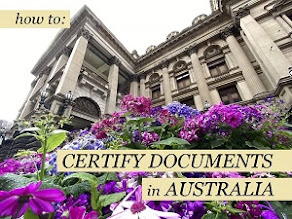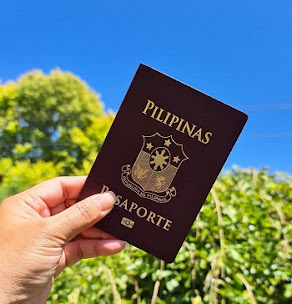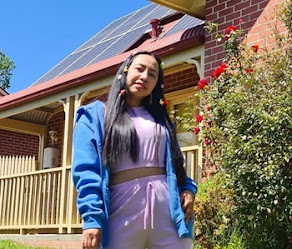With all the noise and chaos of urban life, it is often a great idea to digress and enjoy nature’s beauty with our inner thoughts.
Spending time walking in beautiful gardens like the Royal Tasmanian Botanical Gardens is one of my favorite hobbies. In my opinion, it was a privilege to visit this heavenly spot in Hobart, admiring the painstaking work of many talented gardeners and volunteers who continuously support making this place open for everyone.
I had an amazing and therapeutic experience when I visited the gardens in the summer of 2024.
The Royal Tasmanian Botanical Gardens History
Nurturing over 200 years of history, heritage, and nature, The Royal Tasmanian Botanical Gardens is a breath of fresh air just minutes from the heart of Hobart, Tasmania.
An opportunity to experience Tasmania’s unique range of native flora all in one walkable 14-hectare site. Featuring the world’s only Subantarctic Plant House, a significant collection of heritage trees, and the site of the island’s earliest colonial kitchen garden. The Gardens offers scenic locations for outdoor events, indoor function spaces, an onsite restaurant, kiosk, and gift shop. Open daily all year round.
The Royal Tasmanian Botanical Gardens in Hobart, Tasmania, hold the distinction of being the second-oldest botanical gardens in Australia, with a rich history dating back to 1818. These gardens have evolved through eras of scientific exploration, public engagement, and cultural enrichment.
Established in 1818, the gardens were initially laid out to serve as the lieutenant-governor's private garden. Under Superintendent William Davidson's management (1828–1834), the gardens were limited in public access but began to take on a structured form. Governor Arthur played a significant role in these early years by commissioning the construction of a superintendent's cottage and a heated wall in 1829. These early developments symbolized the merging of utility and aesthetics.
Seeds and plants began arriving in 1829 from England, including forest trees, grains, grasses, and nuts. These botanical exchanges laid the groundwork for horticultural diversity in Tasmania. Though modest in scale during this early phase, the gardens had planted the seeds of what would grow into a world-class institution.
@blair.villanueva Walk with me at Royal Tasmanian Botanical Gardens. This magnificent 14-hectare garden destination offers a scenic location for outdoor events, indoor function spaces, onsite restaurant, kiosk and gift shop. Bring your friends and family, and enjoy the quiet view. No 🐈🐕🦮 allowed. #gardenscapes #tasmaniatravel #spring2024 #gardentok #hobarttasmania ♬ SPRING - Cavendish
The gardens experienced significant growth in the 1970s, acquiring additional land and creating new themed sections. The Japanese Garden, with its tranquil aesthetic, and the French Memorial Fountain, honoring historical ties, highlighted the gardens' ability to evolve while respecting tradition.
Today, the Royal Tasmanian Botanical Gardens offer more than just horticultural displays—they serve as a vibrant community space. Annual events like the Tulip Festival attract visitors from across Australia, showcasing the gardens’ role as a center for education, recreation, and cultural exchange. It has also recently hosted the annual Tasmanian Wine Festival.
Here are the iconic spots you must see around the gardens.
Top Iconic Spots You Must See
Anniversary Arch
The arch was originally constructed in 1913 to span the entrance of the AMP Society’s original Elizabeth Street Building. When the said building was demolished, the AMP donated the arch to The Gardens (like saving one of the relics!). It was re-erected in 1968 in time for celebrations of the Garden’s 150th Anniversary.
Tasmanian Community Food Garden
This area began as Hangan’s Farm in 1806, before it was acquired by Government House and used as part of an original kitchen garden. Now the garden supplies local charities with a range of edible plants.
Eardley-Wilmot Wall
Named after Sir John Eardley-Wilmot, who became the Governor of Tasmania in 1843. This 4-metre high convict-built brick wall stretches 280 metres in an L-shaped form across The Gardens.
Arthur Wall
In 1829, Governor Sir George Arthur ordered the construction of a heated wall to protect frost-tender plants and extend the growing period of fruit trees. Styled on the heated walls that were popular at the time in English gardens, it is one of only a handful in the world.
Tasmanian Flora Collection
A geographically-focused collection of Tasmanian native plants, including endemic, rare, and threatened flora. Species are arranged in related habitat groupings, from rainforest through to coastal flora. Established in 1991 and expanded in 2020, most of the plants have been propagated from material collected.
French Explorers Collection
The French Explorers Collection surrounds the unique Huon pine sculptural centrepiece, ‘Antipodean Voyage’, which represents the bow and sails of a French ship. Most of the species represented in the collection have been selected from plant notes from French explorers, botanists Labillardiere on the D’Entrecasteux (1791-1793) and Jean-Baptiste Leschenault de la Tour on the Baudin (1801-1803).
Subantarctic Plant House
The plants of the Subantarctic Plant House have been collected by members of the Gardens team and associated scientists on field trips to the Subantarctic islands. Opened in 2000, the collection was established for conservation and to raise awareness of the fragility of this unique region.
The Conservatory
Established in 1939, this greenhouse displays a range of exotic plants which would not otherwise grow in the cool Tasmanian climate.
Pinetum Collection
Dating back to the early 1800s, the Pinetum is the first collection established at The Gardens. It is one of the most significant collections of conifers in the southern hemisphere.
Japanese Garden
The Japanese Garden celebrates Hobart’s relationship with its sister city, Yaizu in Japan. Emphasizing traditional elements of wood, stone, and water, the waterways, tea house, waterwheel, and bridge act as a focal point for the central plantings of species native to Japan.
Yunnan Collection
The collection was established in 1996, with the majority of plants wild sourced by The Gardens staff in 1992 in the Yunnan Province of China near the Tibetan border, from altitudes of between 2000-5000 metres.
Last year, we heard the news that the upgrades to the Royal Tasmanian Botanical Gardens are well underway, with stage two of the $7.6 million project commencing in a bid to enhance visitor experiences. The improvements include upgrades to the main entry road, a new elevated pedestrian footpath and accessible crosswalk, lighting, and disability and bicycle parking.
The Royal Tasmanian Botanical Gardens is also recognized as one of the Top 10 most beautiful gardens you must visit in Australia.
It is a great place for picnics, gatherings with friends and families, and if you want to contribute your time and expertise to the community, they are also open for volunteers to help around the operation of these beautiful historical gardens.
Other things to know around the gardens
* The Gardens have some wheelchairs available for hire. We recommend booking in advance as we only have a limited number of wheelchairs available.
* The Gardens are equipped with accessible toilet facilities. These are located near the Visitor Centre, the Arid Collection, and The Pod.
* Photos and videos for personal use are permitted. For professional photography, such as commercial photo shoots, family photo shoots, weddings, and small event photography, you need to seek a permit. Check for its guidelines here.
* You can bring your food and non-alcoholic drinks when visiting the gardens, especially for personal use, and not for catering purposes.
* You can bring alcoholic drinks for private consumption. Drink responsibly and avoid any form of litter.
* Pets are not permitted in the Gardens. Only service animals are welcome.
* Taking plant clippings is not permitted. Penalties will be imposed for such actions.
* The use of drones is strictly prohibited.
* Parking: Accessible parking bays are provided directly outside the main gate and at the lower carpark off the Domain Highway.
The Royal Tasmanian Botanical Gardens
Location: 11 Lower Domain Rd, Hobart TAS 7000
Entry and admission: FREE (donations are acceptable)









































Post a Comment